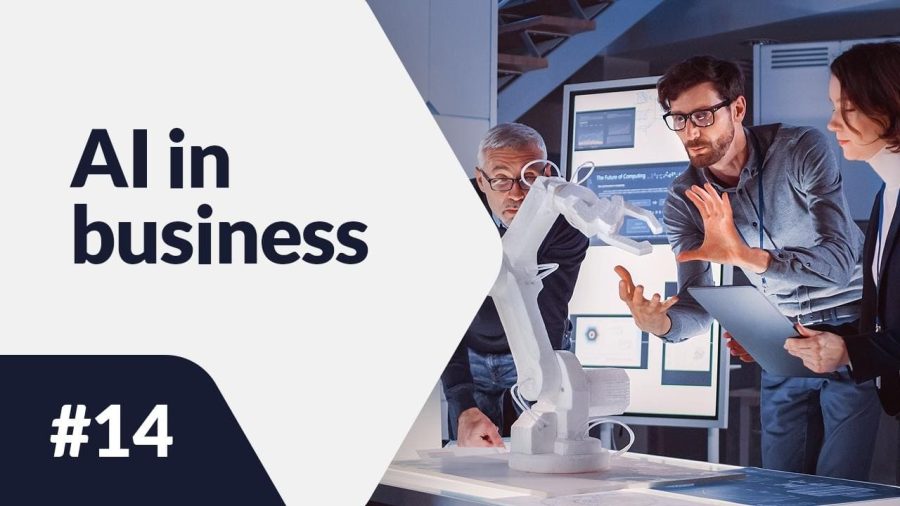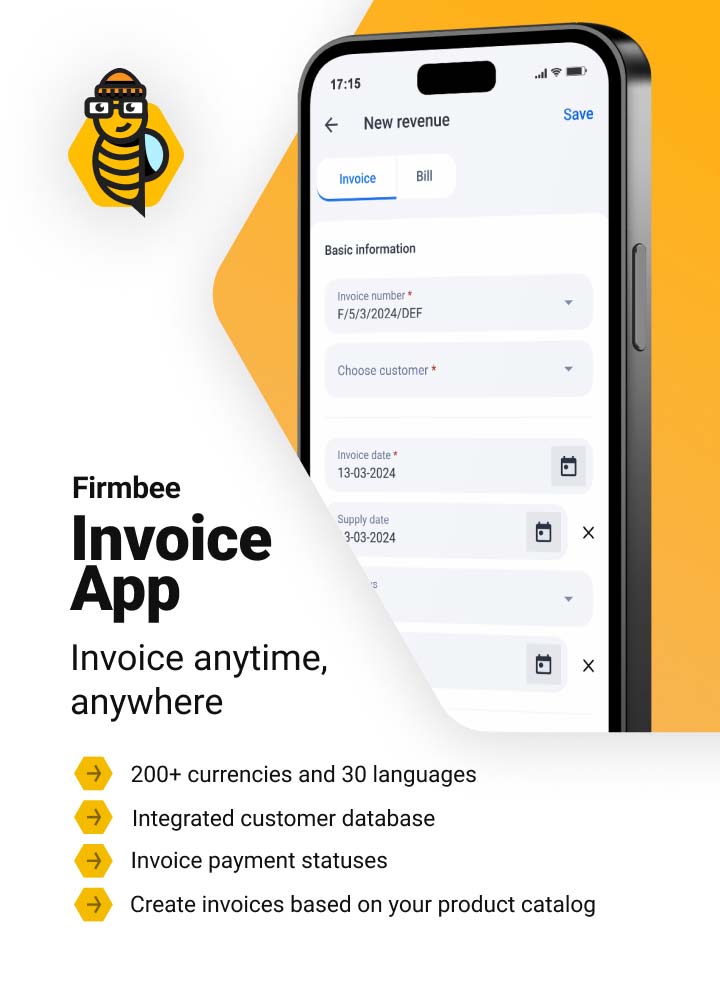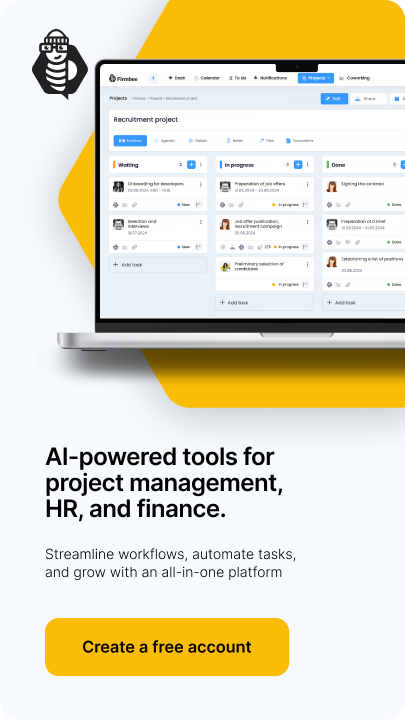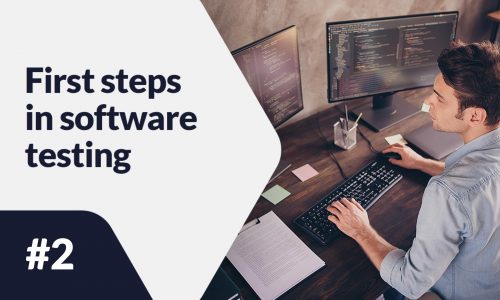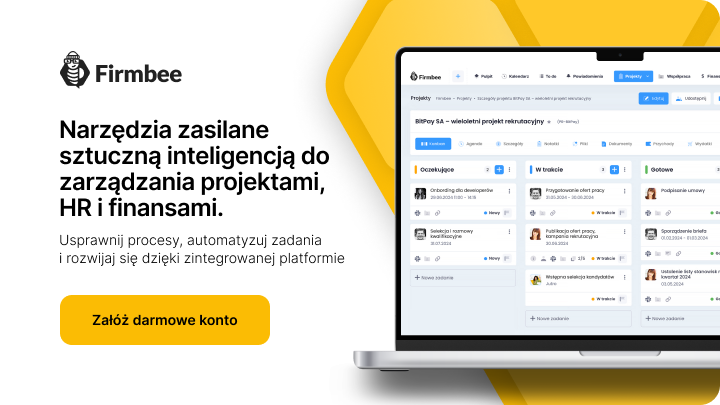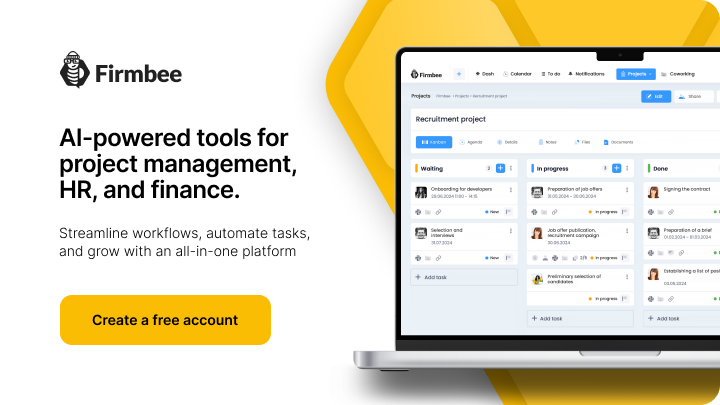How can you harness the power of artificial intelligence to make your business decisions based on detailed data and even more relevant? We’ll take a look at the types of data analysis and how they can be supported by AI, as well as the tools that will revolutionize the way you view data.
Data analysis
4 types of data analysis supported by AI
The most important types of data analysis that artificial intelligence can support are:
- Descriptive analysis – also known as descriptive analysis, is the simplest form of analytics. It involves collecting and organizing historical data, i.e. on what has already happened in the company. It usually does not need to use artificial intelligence. AI is used only when very large amounts of data are being analyzed, or when analysts expect artificial intelligence to uncover new patterns that have not been studied before.
- Augmented analytics – is a tool that supports analysts in tasks such as compiling data for analysis or visualizing results through various charts, tables and presentations. Based on the AI-prepared data, an analyst can more easily conclude the collected material without the help of a team to input and classify information. One can help here with the free ChatGPT tool, or use freemium options such as Visme or Datawrapper.
- Predictive analytics – focuses on finding patterns in existing data so that more accurate decisions can be made based on it and potential risks can be identified. Artificial intelligence uses statistical modeling, machine learning (ML, Machine Learning), and Data Mining techniques to predict future events.
- Prescriptive analytics – otherwise known as prescriptive analytics, like all the above collects data on past situations. However, its purpose is the most complex, and its operation is the most dependent on artificial intelligence. This is because it is about indicating the best behavior in a given business situation.
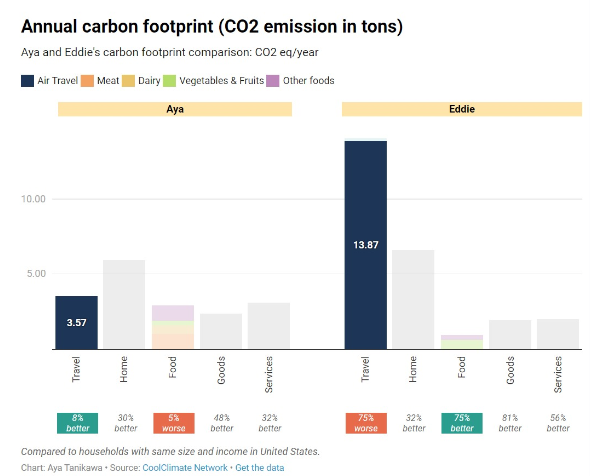
Example of data visualization.
Source: academy.datawrapper.de
Decision making – human vs. AI
The basis for making accurate decisions of any type is knowledge of the relationship between events and processes. Both humans and artificial intelligence trying to predict the future have some chance of success by collecting and analyzing data on the past.
Statistically, the chances of making a more accurate decision are given by a more closed system, that is a situation that is not subject to external influences. The chances of success are also increased by a more extensive data set describing in various ways similar past relationships.
Artificial intelligence has an advantage over humans because it can analyze much larger amounts of data and see patterns in it that are invisible to the human eye. AI can, for example:
- see cyclical changes in demand for the company’s services dependent on location,
- more accurately analyze market information consisting of a variety of data,
- fish out the candidate’s optimal combination of skills for the company from a visually unattractive resume.
However, a human has the advantage over artificial intelligence that when making decisions he can take into account external factors whose impact on the company’s situation may not be obvious or indirect. A human interpreting data can:
- consider the ethical, social and legal aspects of their choices,
- question and critically evaluate their assumptions and conclusions,
- take into account existing relationships with customers and business partners.
Decision-making methods
To cope with the risks, uncertainties and responsibilities associated with making business decisions, companies are adopting methods to make the process easier and more orderly. These include:
- The Eisenhower Matrix – is a simple task prioritization technique based on axes of urgency and importance. It enables you to divide tasks into 4 categories:
- Urgent and important – require immediate implementation.
- Important but non-urgent – you should plan a deadline for their implementation.
- Urgent but unimportant – can be delegated to someone else or skipped altogether.
- Neither urgent nor important – unnecessary, time-absorbing.
- SPADE (Spanning-tree Progression Analysis of Density-normalized Events) – a multifaceted framework that emphasizes single-person accountability for decisions based on sharing the experience of the entire team. It’s a tool used in business, but also in medical diagnostics. AI can support search by data analysis, simulating options and algorithmically modeling the consequences of each decision.
- Agile Inception – creates a framework for the first conceptual and decision-making phase of the agile team’s work. Its main moments are:
- Define product vision and business objectives.
- Analysis of options and risks, prototyping of solutions.
- Selecting the best ideas and determining the MVP.
- Integrated Thinking – which is a method that focuses on the exploration of possibilities and rapid prototyping of solutions, where tools such as ChatGPT or Google Bard will work well.
AI can help business analysts who employ the Eisenhower matrix to automatically categorize analytical tasks by urgency and importance, making prioritization and planning easier.
AI can model risks, simulate options and recommend the best prototypes based on the data.
4 decision making areas supported by AI
Artificial intelligence is used for both simple but labor-intensive data analysis decisions and those that require handling large data sets. These include:
- Entering documents into databases – even in situations where they are delivered to the company in paper form or contain incomplete or poorly structured data, AI can accurately organize the information and decide which collection the document belongs to,
- answering questions asked in natural language – decision-making makes artificial intelligence able to accurately respond to questions asked, and take the initiative by asking follow-up questions,
- Business process management – in the case of incomplete data, AI can decide to move on to one of the cliques of alternative next steps included in the process map
- Process automation – the action of artificial intelligence enables the automation of workflows between the various programs serving the company.
The best AI tools for business data analysis
Below is the latest generation of tools that can help with the most difficult of data analysis – prescriptive analysis, answering the question of what needs to be done to improve results based on the data. None of them will decide on their own, but their capabilities significantly facilitate an objective and multifaceted approach to data.
- ChatGPT Code Interpreter – a tool available to ChatGPT Plus subscribers that features analysis, visualization and interpretation of data of up to 170 MB. Its biggest advantage is that it accurately adapts to the questioner’s commands, while the disadvantage is the need to prepare the data for analysis in another program. However, a Code Interpreter can deal with repeated lines, inaccurate data, and unit inaccuracies, detect outliers, check for errors, clean, preprocess, inspect and visualize data. AI handles structured data exceptionally well. You can upload Excel spreadsheets, CSV files, etc., and have the Code Interpreter describe, process, evaluate, visualize and interpret the data.
- Tableau – offers an “Ask Data” function that enters a natural language query and then automatically generates the appropriate data visualizations. It employs AI to understand the user’s query and provide a data-driven response. Tableau also offers other AI-based features, such as “Explain Data,” which automatically interprets data and provides insights into its meaning.
- Improvado – an analytics tool to consolidate marketing and sales data from various sources in one place. One of the main advantages of Improvado is that it allows integration with Google Ads, Facebook Ads, or Salesforce. In addition to creating custom reports and dashboards that allow you to analyze data quickly and easily.

Summary
Data analysis supported by artificial intelligence is opening up a new dimension of possibilities for business decision-making. While AI has the potential to analyze much larger data sets and see hidden patterns in them, it will not replace human judgment and intuition. Collaboration between humans and technology, through the best AI tools, is the key to a future in which decisions are more informed, accurate and based on solid data.
If you like our content, join our busy bees community on Facebook, Twitter, LinkedIn, Instagram, YouTube, Pinterest.
Author: Robert Whitney
JavaScript expert and instructor who coaches IT departments. His main goal is to up-level team productivity by teaching others how to effectively cooperate while coding.
AI in business:
- Threats and opportunities of AI in business (part 1)
- Threats and opportunities of AI in business (part 2)
- AI applications in business - overview
- AI-assisted text chatbots
- Business NLP today and tomorrow
- The role of AI in business decision-making
- Scheduling social media posts. How can AI help?
- Automated social media posts
- New services and products operating with AI
- What are the weaknesses of my business idea? A brainstorming session with ChatGPT
- Using ChatGPT in business
- Synthetic actors. Top 3 AI video generators
- 3 useful AI graphic design tools. Generative AI in business
- 3 awesome AI writers you must try out today
- Exploring the power of AI in music creation
- Navigating new business opportunities with ChatGPT-4
- AI tools for the manager
- 6 awesome ChatGTP plugins that will make your life easier
- 3 grafików AI. Generatywna sztuczna inteligencja dla biznesu
- What is the future of AI according to McKinsey Global Institute?
- Artificial intelligence in business - Introduction
- What is NLP, or natural language processing in business
- Automatic document processing
- Google Translate vs DeepL. 5 applications of machine translation for business
- The operation and business applications of voicebots
- Virtual assistant technology, or how to talk to AI?
- What is Business Intelligence?
- Will artificial intelligence replace business analysts?
- How can artificial intelligence help with BPM?
- AI and social media – what do they say about us?
- Artificial intelligence in content management
- Creative AI of today and tomorrow
- Multimodal AI and its applications in business
- New interactions. How is AI changing the way we operate devices?
- RPA and APIs in a digital company
- The future job market and upcoming professions
- AI in EdTech. 3 examples of companies that used the potential of artificial intelligence
- Artificial intelligence and the environment. 3 AI solutions to help you build a sustainable business
- AI content detectors. Are they worth it?
- ChatGPT vs Bard vs Bing. Which AI chatbot is leading the race?
- Is chatbot AI a competitor to Google search?
- Effective ChatGPT Prompts for HR and Recruitment
- Prompt engineering. What does a prompt engineer do?
- AI Mockup generator. Top 4 tools
- AI and what else? Top technology trends for business in 2024
- AI and business ethics. Why you should invest in ethical solutions
- Meta AI. What should you know about Facebook and Instagram's AI-supported features?
- AI regulation. What do you need to know as an entrepreneur?
- 5 new uses of AI in business
- AI products and projects - how are they different from others?
- AI-assisted process automation. Where to start?
- How do you match an AI solution to a business problem?
- AI as an expert on your team
- AI team vs. division of roles
- How to choose a career field in AI?
- Is it always worth it to add artificial intelligence to the product development process?
- AI in HR: How recruitment automation affects HR and team development
- 6 most interesting AI tools in 2023
- 6 biggest business mishaps caused by AI
- What is the company's AI maturity analysis?
- AI for B2B personalization
- ChatGPT use cases. 18 examples of how to improve your business with ChatGPT in 2024
- Microlearning. A quick way to get new skills
- The most interesting AI implementations in companies in 2024
- What do artificial intelligence specialists do?
- What challenges does the AI project bring?
- Top 8 AI tools for business in 2024
- AI in CRM. What does AI change in CRM tools?
- The UE AI Act. How does Europe regulate the use of artificial intelligence
- Sora. How will realistic videos from OpenAI change business?
- Top 7 AI website builders
- No-code tools and AI innovations
- How much does using AI increase the productivity of your team?
- How to use ChatGTP for market research?
- How to broaden the reach of your AI marketing campaign?
- "We are all developers". How can citizen developers help your company?
- AI in transportation and logistics
- What business pain points can AI fix?
- Artificial intelligence in the media
- AI in banking and finance. Stripe, Monzo, and Grab
- AI in the travel industry
- How AI is fostering the birth of new technologies
- The revolution of AI in social media
- AI in e-commerce. Overview of global leaders
- Top 4 AI image creation tools
- Top 5 AI tools for data analysis
- AI strategy in your company - how to build it?
- Best AI courses – 6 awesome recommendations
- Optimizing social media listening with AI tools
- IoT + AI, or how to reduce energy costs in a company
- AI in logistics. 5 best tools
- GPT Store – an overview of the most interesting GPTs for business
- LLM, GPT, RAG... What do AI acronyms mean?
- AI robots – the future or present of business?
- What is the cost of implementing AI in a company?
- How can AI help in a freelancer’s career?
- Automating work and increasing productivity. A guide to AI for freelancers
- AI for startups – best tools
- Building a website with AI
- OpenAI, Midjourney, Anthropic, Hugging Face. Who is who in the world of AI?
- Eleven Labs and what else? The most promising AI startups
- Synthetic data and its importance for the development of your business
- Top AI search engines. Where to look for AI tools?
- Video AI. The latest AI video generators
- AI for managers. How AI can make your job easier
- What’s new in Google Gemini? Everything you need to know
- AI in Poland. Companies, meetings, and conferences
- AI calendar. How to optimize your time in a company?
- AI and the future of work. How to prepare your business for change?
- AI voice cloning for business. How to create personalized voice messages with AI?
- Fact-checking and AI hallucinations
- AI in recruitment – developing recruitment materials step-by-step
- Midjourney v6. Innovations in AI image generation
- AI in SMEs. How can SMEs compete with giants using AI?
- How is AI changing influencer marketing?
- Is AI really a threat to developers? Devin and Microsoft AutoDev
- AI chatbots for e-commerce. Case studies
- Best AI chatbots for ecommerce. Platforms
- How to stay on top of what's going on in the AI world?
- Taming AI. How to take the first steps to apply AI in your business?
- Perplexity, Bing Copilot, or You.com? Comparing AI search engines
- ReALM. A groundbreaking language model from Apple?
- AI experts in Poland
- Google Genie — a generative AI model that creates fully interactive worlds from images
- Automation or augmentation? Two approaches to AI in a company
- LLMOps, or how to effectively manage language models in an organization
- AI video generation. New horizons in video content production for businesses
- Best AI transcription tools. How to transform long recordings into concise summaries?
- Sentiment analysis with AI. How does it help drive change in business?
- The role of AI in content moderation
